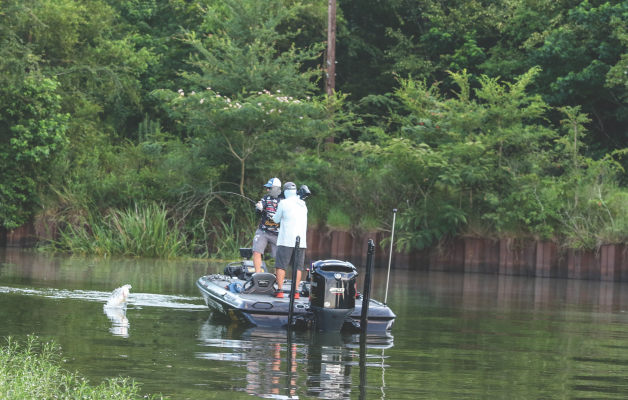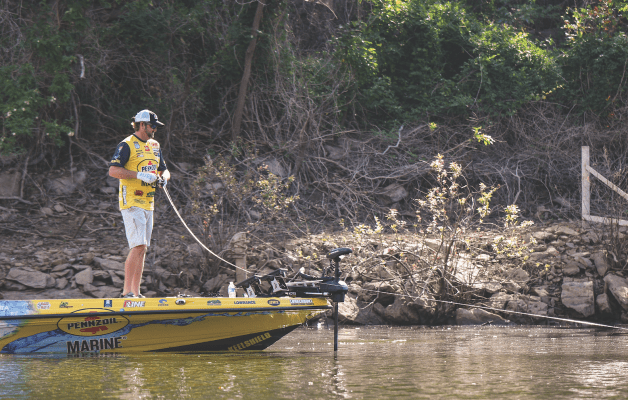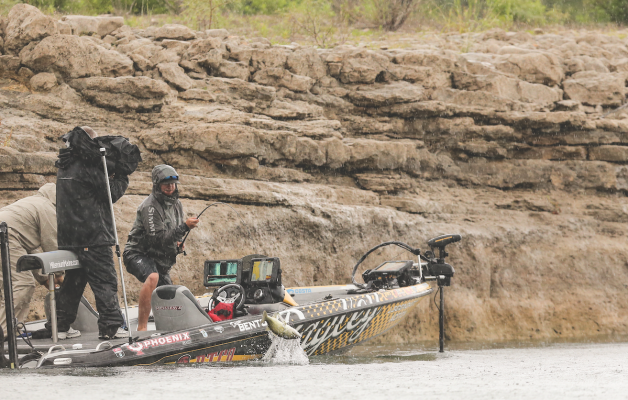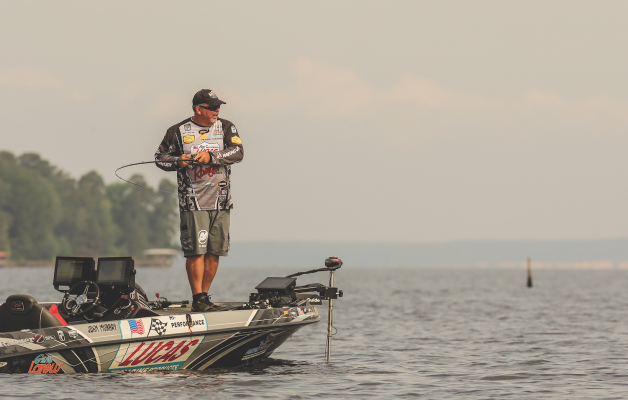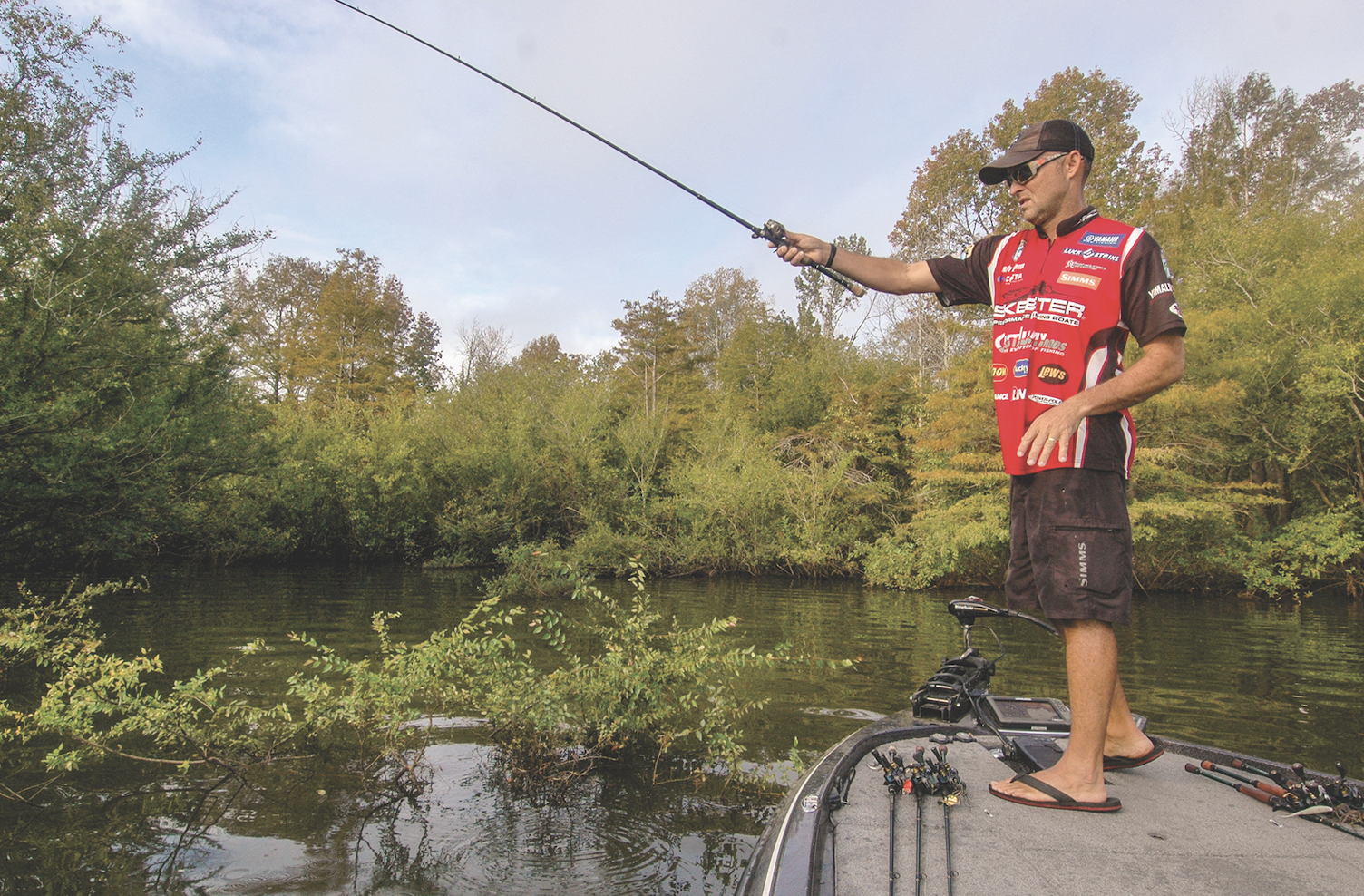
When bass refuse to bite due to heavy fishing pressure, post cold-front conditions or some inexplicable factor, the knee-jerk reaction from many anglers, including some of the pros, is to lighten up and slow down with soft plastic baits. The theory is that the bass are skittish or in a non-feeding funk. A light lure is less intimidating and moves slowly, which gives reluctant bass more time to respond. Bassmaster Elite Series pro Marty Robinson concedes that going light frequently pays off. However, he has found that going heavier usually puts more bass in his livewell.
Say, for example, that Robinson had been catching bass by pitching a Texas rigged Zoom Z Craw, one of his favorite baits, into flooded bushes and laydowns with a 3/8-ounce tungsten bullet sinker. If the bass stopped biting that combination, he would switch to a 1/2- or 3/4-ounce sinker, even though the water may be no deeper than 3 or 4 feet. If the cover is in water deeper than 5 feet, Robinson has been known to step up to a 1-ounce sinker — a size typically reserved for punching matted grass


